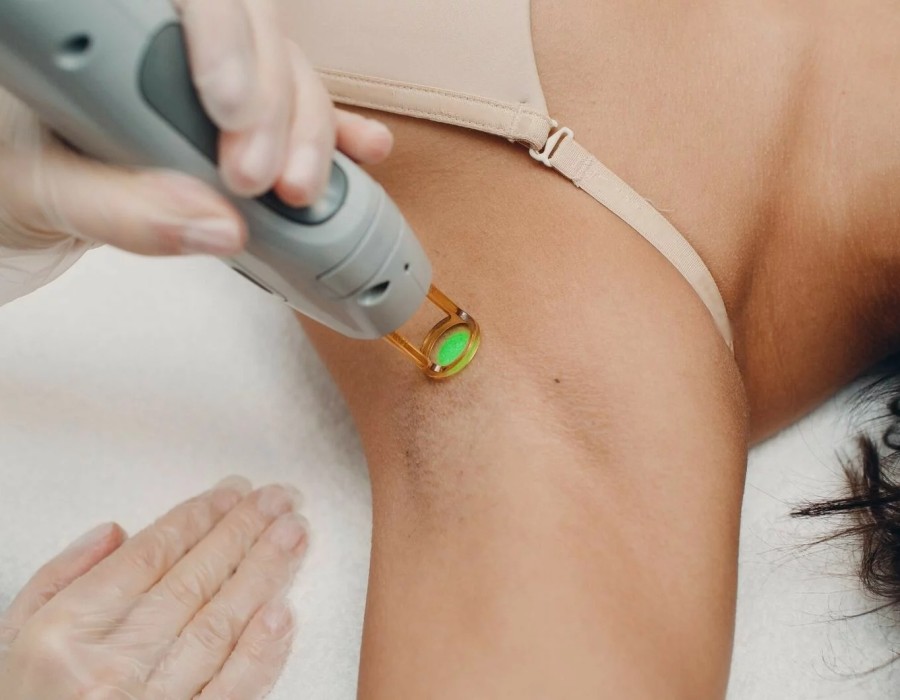When it comes to long-term hair removal, few treatments spark as much interest and curiosity as electrolysis and laser hair removal. But what happens when the two seemingly different techniques are merged into one concept — Electrolysis Laser Hair Removal in Dubai? While the name may sound like a hybrid, it actually points to two distinct technologies often compared or combined in comprehensive hair removal plans. Understanding how these methods work, both separately and in potential synergy, is key for those seeking smooth, hair-free skin.
Let’s unravel the science, process, and effects behind electrolysis and laser hair removal, how they target unwanted hair at the root, and why some opt for both in their journey toward permanent hair reduction.
The Basics of Hair Growth
Before diving into how these hair removal methods work, it’s important to understand how hair grows. Each hair follicle goes through three phases: the anagen (growth), catagen (transition), and telogen (resting) phases. Effective hair removal occurs best during the anagen phase because that’s when the hair is most firmly anchored in the follicle, making it more vulnerable to targeted energy or chemical disruption.
Both electrolysis and laser treatments focus on damaging the hair follicle to prevent regrowth, but they do it in very different ways.
What is Electrolysis?
Electrolysis is the only FDA-approved method for permanent hair removal. It involves inserting a tiny probe into the hair follicle and delivering a small electric current. This current destroys the follicle’s growth center through chemical (galvanic), heat (thermolysis), or a blend of both methods.
Since electrolysis targets individual follicles, it’s incredibly precise and suitable for all hair types and skin tones. It’s often chosen for facial hair, fine or white hairs, and smaller areas like eyebrows or the upper lip.
How Electrolysis Works:
- A fine probe is inserted into the follicle without puncturing the skin.
- A current is applied to destroy the follicle’s ability to regrow hair.
- The treated hair is removed with tweezers.
- Multiple sessions are needed as each follicle must be treated individually, and only hairs in the active growth phase can be effectively targeted.
Though time-consuming, electrolysis can deliver permanent results, especially with regular sessions over time.
What is Laser Hair Removal?
Laser hair removal uses pulses of laser light to target the melanin (pigment) in the hair. The light energy converts into heat, which damages the hair follicle, inhibiting future hair growth. This method works best on people with light skin and dark hair, as the contrast helps the laser find the pigment more easily.
How Laser Hair Removal Works:
- A laser emits a concentrated beam of light.
- The pigment in the hair absorbs the light.
- Heat damages the follicle, slowing or stopping hair growth.
- Hairs fall out over time, and regrowth becomes thinner and lighter.
Laser treatments are generally faster than electrolysis, covering larger areas such as the back, chest, legs, or arms. However, they are not always permanent and usually require maintenance sessions.
Is There a Combined Method?
While the term “Electrolysis Laser Hair Removal” might suggest a single procedure combining both methods, it usually refers to using both treatments in a tailored plan. For example, someone may undergo laser sessions to reduce bulk hair growth and then switch to electrolysis to fine-tune stubborn hairs or target areas that lasers can’t treat effectively.
This two-step approach is particularly popular in long-term grooming strategies, offering both speed and precision. In some places like Electrolysis Laser Hair Removal in Dubai, clients often seek this combo to deal with persistent or hormonal hair growth, where a more comprehensive strategy ensures lasting results.

Which One is Right for You?
Choosing between electrolysis and laser depends on various factors:
- Hair and skin type: Laser is best for light skin with dark hair, while electrolysis works for all combinations.
- Treatment area: Laser covers larger areas quickly; electrolysis is ideal for detailed zones.
- Pain threshold: Both can cause mild discomfort, but topical numbing creams can ease sensations.
- Time commitment: Electrolysis takes longer but offers permanent results; laser is quicker per session but may not remove all hair permanently.
- Budget and expectations: Some prefer the upfront speed of laser, followed by electrolysis to handle regrowth more precisely.
What to Expect After Treatment
After a session of either method, it’s normal to experience redness, minor swelling, or sensitivity in the treated area. Post-treatment care typically includes:
- Avoiding sun exposure
- Applying soothing gels or ice packs
- Steering clear of hot baths or saunas for 24–48 hours
Results are not instant. Both methods require commitment over weeks or months, but they can significantly reduce unwanted hair and increase skin smoothness and confidence.
Final Thoughts
If you're considering long-term hair removal, understanding the mechanisms behind electrolysis and laser treatments helps set realistic expectations. Whether used separately or in tandem, both offer powerful tools for managing unwanted hair. And in places with advanced beauty care trends like Electrolysis Laser Hair Removal Dubai, clients are often empowered to customize their treatment plan to meet their goals, skin type, and lifestyle.
From precision to permanence, your smooth-skin journey might just begin with learning how these technologies truly work — and how they can work together for you.





Comments